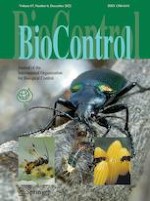27-11-2022
Aphids and associated parasitoids exhibit vertical canopy distribution differences in pecans
Published in: BioControl | Issue 6/2022
Log inActivate our intelligent search to find suitable subject content or patents.
Select sections of text to find matching patents with Artificial Intelligence. powered by
Select sections of text to find additional relevant content using AI-assisted search. powered by
